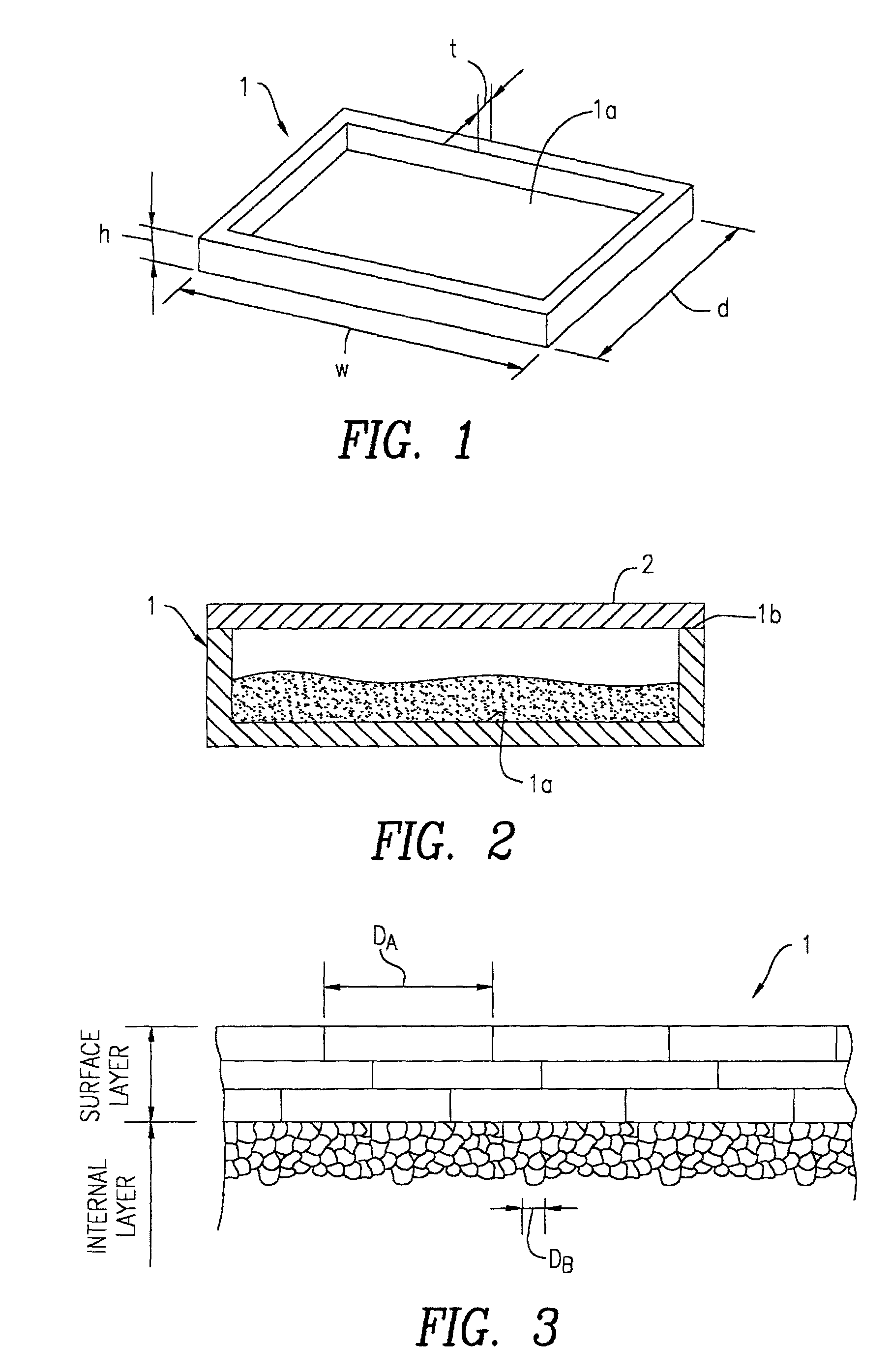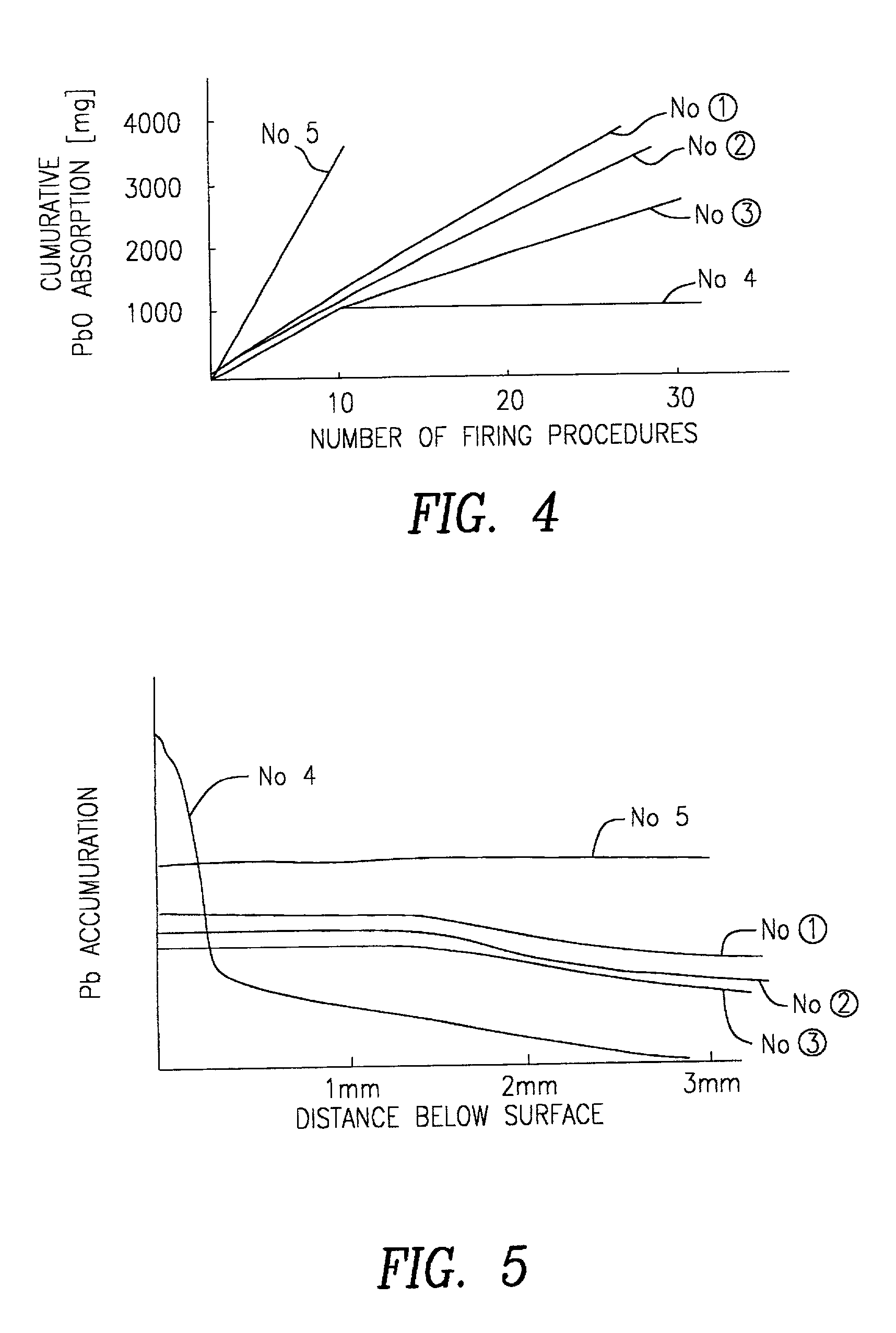Alumina sintered compact and method of producing the same, and article for heat treatment using alumina sintered compact
a technology of alumina sintered compact and alumina sintered, which is applied in the direction of lighting and heating apparatus, instruments, furniture, etc., can solve the problems of deterioration of sintered compact, strength and creep characteristics of sintered compact, and shortened life of heat treatment firing tools or tubes in some cases
- Summary
- Abstract
- Description
- Claims
- Application Information
AI Technical Summary
Benefits of technology
Problems solved by technology
Method used
Image
Examples
experiment 1
[0052] Experiment 1
[0053] In this experiment, the cross section of bottom 1a (see FIGS. 1 and 2) of each of Samples No. 1* to No. 7 was observed with a scanning electron microscope to determine the thickness and mean grain size of the surface layer and the mean grain size of the internal layer.
[0054] In Table 1, Sample No. 4, in which alumina powder A and alumina powder B were mixed in a ratio of 1:1, had the surface layer formed overall in the thickness direction and had no internal layer. This is probably because the ratio of plate alumina powder A was excessively high. Separately, Sample No. 5, in which granular alumina powder B alone was used, naturally had the internal layer alone.
[0055] Sample No. 6, in which alumina powder A was mixed with alumina powder B in a ratio of 1:1 and the mixture was fired at 1500.degree. C., had the internal layer alone and no grain growth occurred. This is probably because the firing temperature was excessively low. Sample No. 7, in which powder A...
experiment 2
[0057] Experiment 2
[0058] Alumina powder A and alumina powder B were mixed in the same ratios as in the above samples according to the present invention, and each of the resulting mixtures was molded by dry press molding, wet press molding, extrusion molding, injection molding or doctor blade process to yield a series of sintered compacts. Each of the samples prepared by the above techniques had no crystal structure composed of a surface layer and an internal layer.
experiment 3
[0059] Experiment 3
[0060] In this experiment, the cumulative PbO absorption of each of Samples No.1 * to No. 5 was determined in the following manner. As shown in FIG. 2, frame top face 1b of tool material 1 was ground, and the opening of tool material 1 was sealed with Al.sub.2O.sub.3 dense plate 2, 50 g of a PbO powder was then placed in tool material 1 and the powder was fired at 1300.degree. C. for 2 hours. This cycle was repeated 30 times, and tool material 1 was weighed after each firing procedure to determined the cumulative PbO absorption. The results are shown in FIG. 4.
[0061] FIG. 4 shows that the PbO absorption was high and the tool material became unworkable after about tenth firing procedure in conventional Sample No. 5 having the internal layer alone. In conventional Sample No. 4 in which grain growth occurred overall in the thickness direction, the PbO absorption reached the maximum of 1000 mg after about tenth firing procedure, indicating that repeated firing procedu...
PUM
| Property | Measurement | Unit |
|---|---|---|
| Fraction | aaaaa | aaaaa |
| Fraction | aaaaa | aaaaa |
| Fraction | aaaaa | aaaaa |
Abstract
Description
Claims
Application Information
 Login to View More
Login to View More - R&D
- Intellectual Property
- Life Sciences
- Materials
- Tech Scout
- Unparalleled Data Quality
- Higher Quality Content
- 60% Fewer Hallucinations
Browse by: Latest US Patents, China's latest patents, Technical Efficacy Thesaurus, Application Domain, Technology Topic, Popular Technical Reports.
© 2025 PatSnap. All rights reserved.Legal|Privacy policy|Modern Slavery Act Transparency Statement|Sitemap|About US| Contact US: help@patsnap.com


